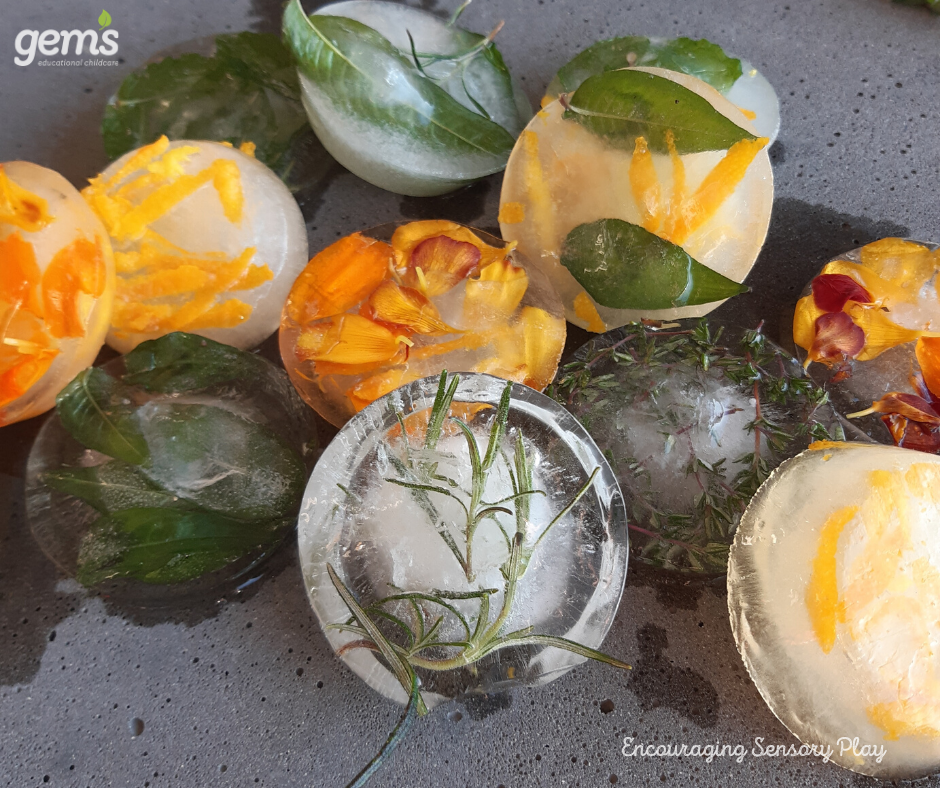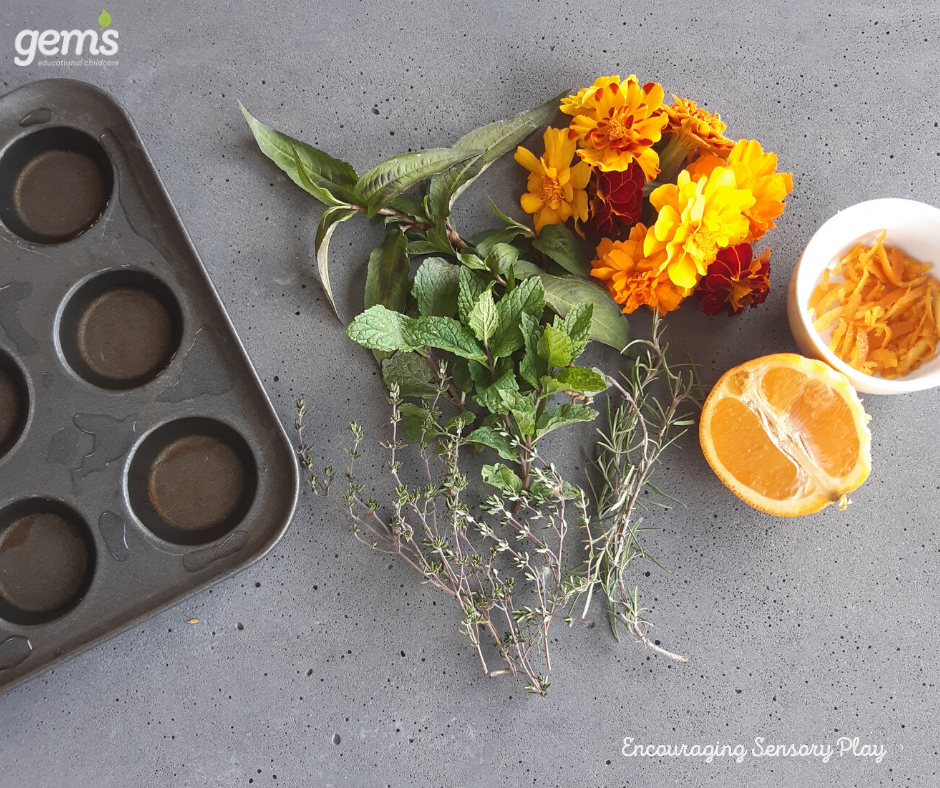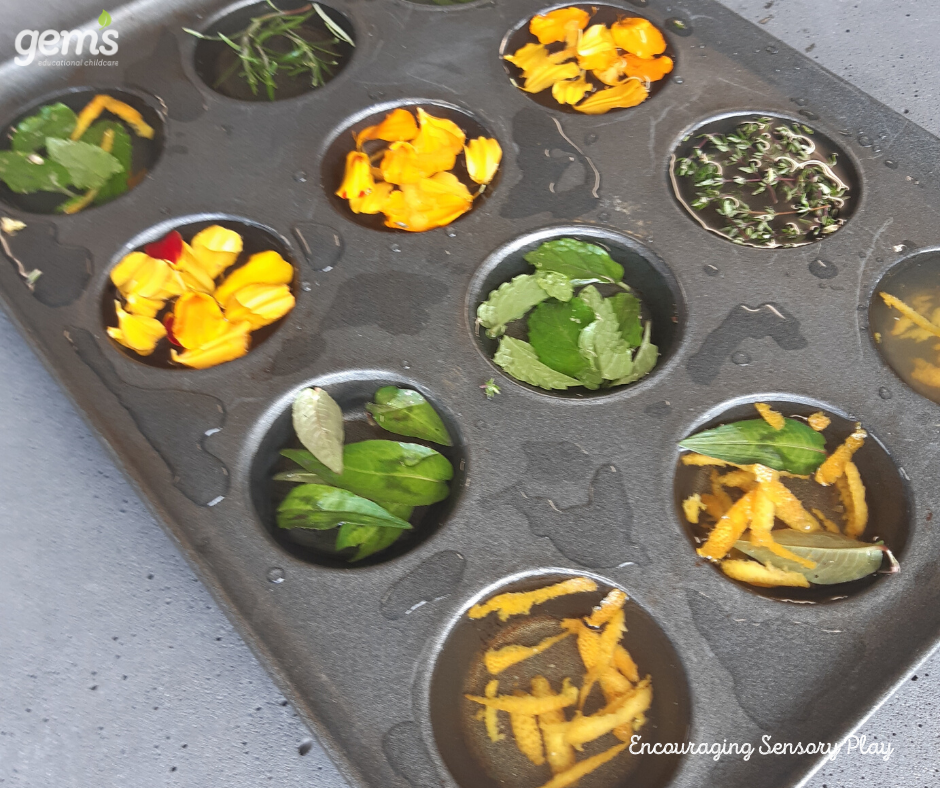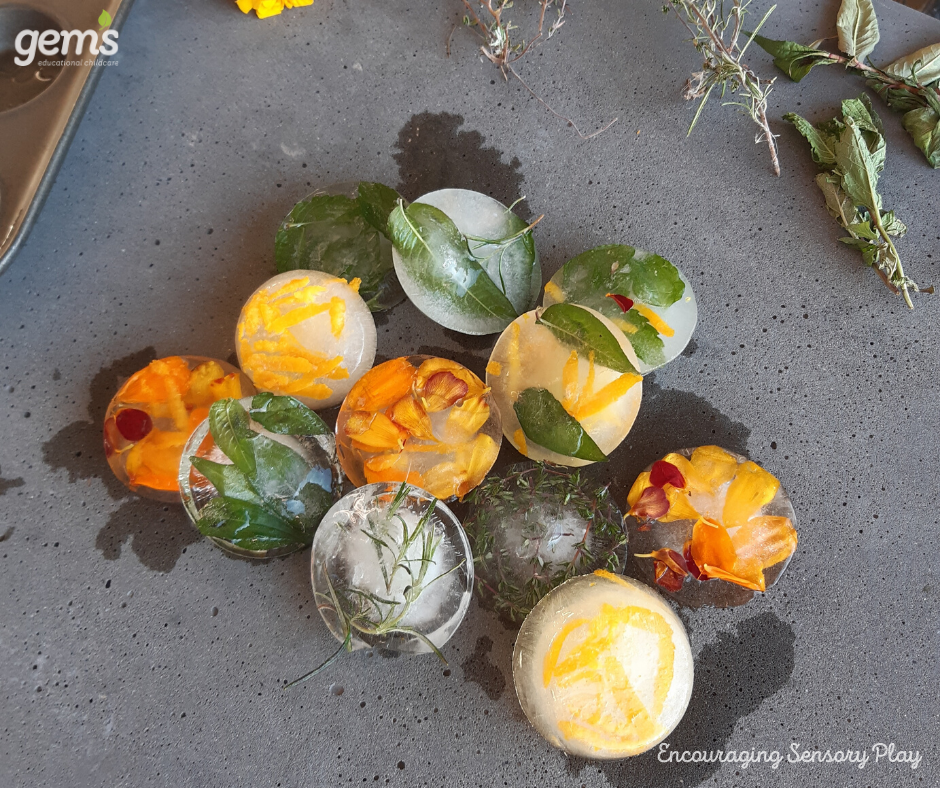Sensory Play - Kaylee Watson
I have chosen to share this particular sensory activity involving herbs and other edible and fragrant items frozen in water to create a range of senses for your babies to explore. This can be used for almost any age group, adjusting the size of the ice cube and/or its contents. I have chosen more of a disc shape having the Nest children in mind, thin enough for an easy grasp with their hands, able to taste and smell but large enough not to be a hazard when exploring taste. In these sensory ice blocks, I have used mint, thyme, rosemary, Vietnamese mint, marigolds (varying colours), orange juice and orange rind. Choices are endless, even using dried herbs and spices.
From birth to early childhood, children use their five senses to explore and try to make sense of the world around them. It is an important part of early childhood development, and providing opportunities for children to actively use their senses as they explore their world through sensory play is crucial to brain development.
Learning through sensory exploration comes naturally to babies and young children, they have an innate desire to explore their world around them. Which makes sense when you consider that the skills they’ll come to rely on to build an understanding of objects, spaces, people and interactions are yet to be fully developed. As adults, our senses provide us with vital information that we use to inform decision making thousands of times a day. We may take this ability for granted and barely notice it, but it’s for this reason that helping children to learn about their own senses is so important.
So, what is sensory play?
It includes any activity that stimulates a baby’s sense of touch, smell, taste, sight, or hearing. The idea is to encourage a child or baby to use their senses to play, create, investigate and explore. Sensory play can be an early, but important step in the development process.
Picking things up and feeling their texture is what people often associate with sensory play, but it’s about much more than touch. Sensory play includes any activity that stimulates a young child's senses of touch, smell, taste, sight and hearing, as well as anything which engages movement and balance. Sensory play is only really limited by your own imagination, with of course some common sense being used around the materials and types of play appropriate for your child’s age and ability.
Some examples to get you started are:
Sensory play for babies – watching bubbles float and feeling them land on their skin, or scrunching coloured paper to hear the noise, feel the contours and see the shapes change
Sensory play for toddlers – observing light and shadow created by torch light on objects of different shapes or sizes, or watching the colours mix and the patterns form by finger painting or sponge painting (with child-safe paint)
Sensory play for pre-school aged children – creating shapes and playing with kinetic sand, or playing with musical instruments and listening to the tone and pitch as they strike or blow through instruments softly or forcefully.
Probably the simplest way to help children engage their senses is by playing outside with nature, full of colours, movement, textures, sounds and smells.




